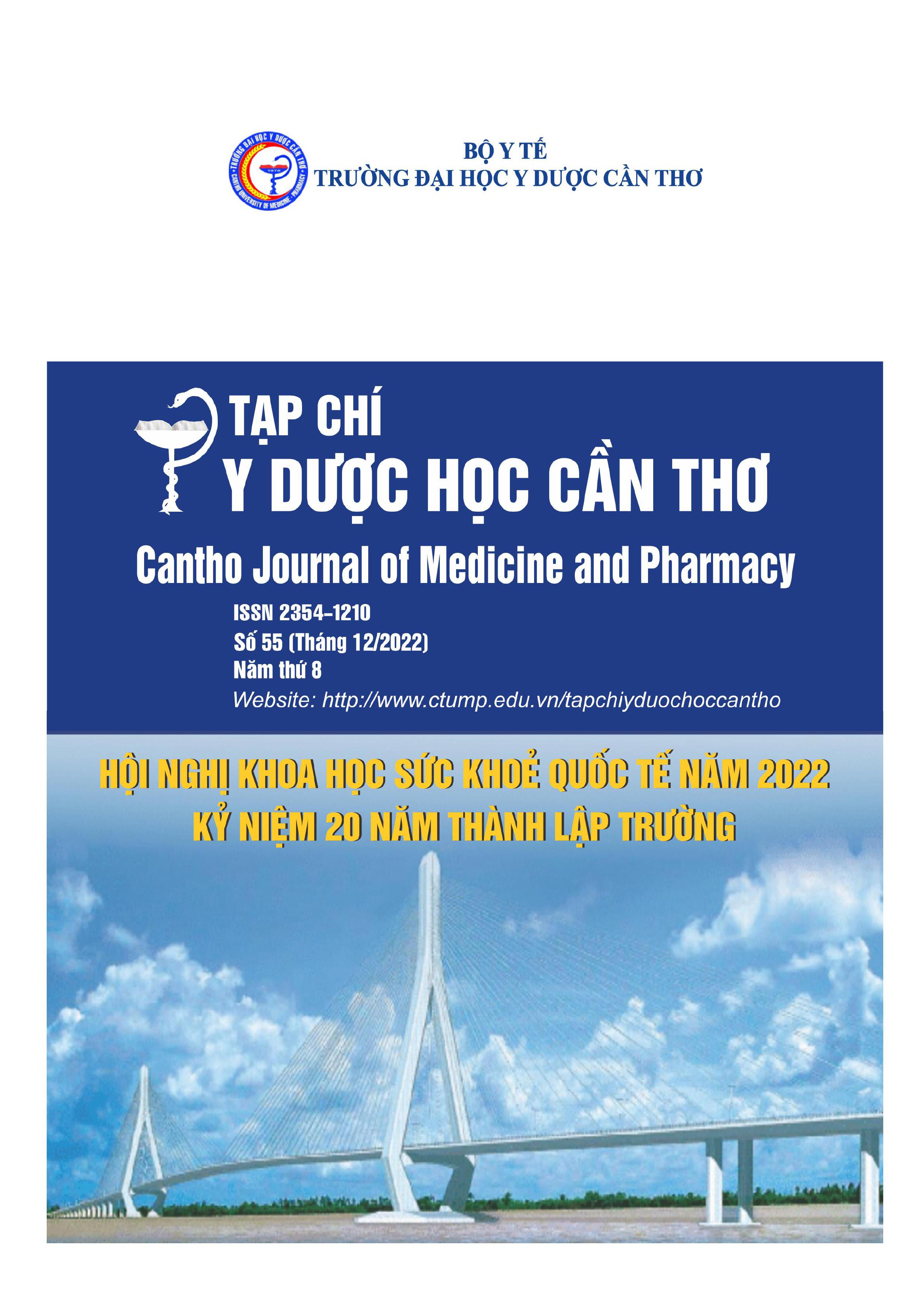STUDY IN VARIATIONS AND THE PROGNOSTIC ROLE OF HIGH-SENSITIVITY TROPONIN T FOR THE DEVELOPMENT OF ARRHYTHMIA AFTER HEART VALVE SURGERY AT CAN THO CENTRAL GENERAL HOSPITAL 2021-2022
Main Article Content
Abstract
Background: In heart valve surgery to treat valve disease, every attempt is made to protect the myocardium, but myocardial damage is inevitable. The myocardial damage will increase high-sensitivity troponin T (hs-TnT) in the postoperative period and as a biomarker for the development of arrhythmia after heart valve surgery. Objective: Study variations and the prognostic role of hs-TnT for the development of arrhythmia after heart valve surgery at the cardiac surgery department, Can Tho central general hospital 2021-2022. Materials and methods: A cross-sectional descriptive study with analysis was carried out on 37 heart valve disease patients who indicated and had heart valve surgery. Recorded arrhythmia development by prolonged electrocardiogram monitoring. Results: After heart valve surgery, hs-TnT levels were highest at 4 hours after aortic clamp removal with an average value of 1.710±1.254ng/mL, and the rate of arrhythmia was 29.7% (11/37 patients). There was a positive correlation between hs-TnT levels at 4 hours after aortic clamp removal and arrhythmia development, the correct prediction rate was 81.1% (r=1,474, CI 95%: 1.637-11.647, p<0.01), the area under the ROC curve of hs-TnT levels for arrhythmia development was 87.1%, p<0.001 (the cut-off point of hsTnT levels for arrhythmia development was 2.650ng/mL with a sensitivity of 72.7% and a specificity of 88.5%). Conclusion: In patients after heart valve surgery, hs-TnT levels were highest at 4 hours after aortic clamp removal and was a positive correlation with arrhythmia development, hs-TnT levels ≥2.650ng/L were independently predictive of arrhythmia development.
Article Details
Keywords
High-sensitivity troponin T, arrhythmia, heart valve surgery
References
2. Đặng Văn Thức(2020), Nghiên cứu vai trò tiên lượng của troponin I, NT - proBNP trong hồi sức sau phẫu thuật tim mở ở trẻ em mắc bệnh tim bẩm sinh, Luận án Tiến sĩ Y học, Hà Nội.
3. Chakravarthy M(2017), Modifying risks to improve outcome in cardiac surgery: An anesthesiologist's perspective, Ann Card Anaesth, 20 (2), pp.226–233.
4. Chapman AR, Adamson PD, Et al(2020), High-sensitivity cardiac troponin and the universal definition of myocardial infarction, Circulation, 14 (3), pp.161–171.
5. Chung MK(2000), Cardiac surgery: postoperative arrhythmias, Crit Care Med, 28 (10 Suppl), pp.136-44.
6. Hernández-Romero D(2014), High-sensitivity troponin T as a biomarker for the development of atrial fibrillation after cardiac surgery, Eur J Cardiothorac Surg, 45 (4), pp.733-738.
7. Duchnowski P, Hryniewiecki T(2019), Postoperative high-sensitivity troponin T as a predictor of sudden cardiac arrest in patients undergoing cardiac surgery, Cardiology Journal, 26 (6), pp.777–781.
8. Heusch G(2017), Remote Ischemic Conditioning in Cardiovascular Surgery: Still a Viable and Realistic Option?, Journal of Cardiovascular 22 (4), pp. 297-301.
9. Januzzi JL, Lewandrowski K, Et al(2002), A comparison of cardiac troponin T and creatine kinase-MB for patient evaluation after cardiac surgery, J Am Coll Cardiol, 39 (9), pp.1518-1523.
10. Peretto G, Durante A, et al. (2014), Postoperative arrhythmias after cardiac surgery: Incidence, risk factors, and therapeutic management, Cardiology Research and Practice, 2014, pp.1-15.
11. Zachoval CF, Dolscheid-Pommerich R, et al. (2020), High-sensitivity troponin T testing: Consequences on daily clinical practice and effects on diagnosis of myocardial infarction, J Clin Med, 9 (3), pp.1-10.


